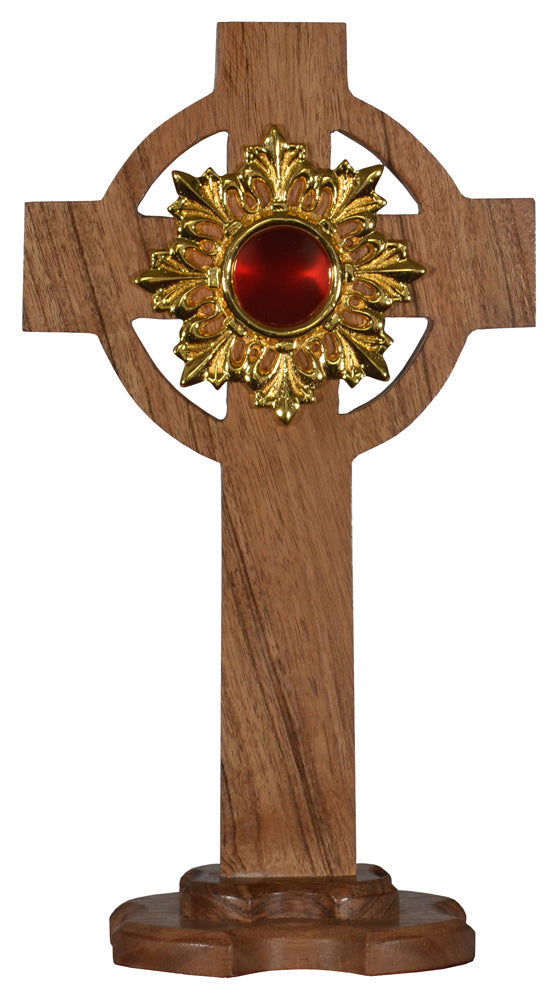Liturgical Accessories: Enhancing Worship and Tradition
The Significance of Liturgical Accessories
Liturgical accessories play a vital role in enhancing the beauty, solemnity, and reverence of religious ceremonies. These items are not merely decorative they are imbued with symbolic meaning and contribute to the overall experience of worship. From the altar cloths that adorn the sacred table to the chalices used for Holy Communion, each accessory serves a specific purpose and reflects the rich traditions of the church.
The careful selection and proper use of liturgical accessories demonstrate respect for the divine and create an atmosphere conducive to prayer and reflection. These items help to focus the attention of the congregation on the sacred mysteries being celebrated and deepen their understanding of the faith.
Essential Types of Liturgical Accessories
The range of liturgical accessories is extensive, encompassing items used in various aspects of worship. Here are some of the most essential types:
-
Altar Cloths: These cloths cover the altar, symbolizing the table of the Lord and the purity of Christ.
-
Chalice and Paten: The chalice holds the wine consecrated during Holy Communion, while the paten holds the bread.
-
Ciborium: A covered container used to store consecrated hosts.
-
Cruets: Small vessels used to hold the water and wine for Holy Communion.
-
Candlesticks: Holders for candles, which symbolize the light of Christ.
-
Processional Cross: A cross carried in processions, representing Christ's victory over death.
-
Thurible and Boat: The thurible is used to burn incense, symbolizing prayers rising to heaven, and the boat holds the incense.
-
Aspergillum: A tool used to sprinkle holy water.
-
Albs and Cinctures: Vestments worn by clergy and altar servers.
-
Stoles and Chasubles: Vestments worn by priests, with colors that vary according to the liturgical season.
-
Corporal, Purificator, and Pall: Linens used during Holy Communion to protect and cleanse the sacred vessels.
Materials Used in Liturgical Accessories
The materials used in liturgical accessories are often chosen for their beauty, durability, and symbolic significance. Common materials include:
-
Linen: A natural fiber often used for altar cloths and other linens due to its purity and absorbency.
-
Cotton: Another natural fiber that is durable and easy to care for, often used in vestments and other accessories.
-
Silk: A luxurious fabric often used for vestments and altar cloths, symbolizing royalty and reverence.
-
Wool: A warm and durable fabric often used for vestments, especially in colder climates.
-
Metals: Gold, silver, and brass are often used for chalices, patens, and other sacred vessels, symbolizing preciousness and divinity.
-
Wood: Used for crosses, candlesticks, and other accessories, representing the wood of the cross on which Christ was crucified.
Embroidery and Symbolism in Liturgical Accessories
Embroidery plays a significant role in many liturgical accessories, adding beauty and symbolism to the items. Common symbols include:
-
The Cross: The most universal symbol of Christianity, representing Christ's sacrifice and redemption.
-
The Chi Rho: An ancient symbol for Christ, formed by the first two letters of his name in Greek.
-
The Lamb of God: A symbol of Christ's innocence and sacrifice.
-
The Dove: A symbol of the Holy Spirit.
-
The IHS Monogram: A monogram of the name of Jesus.
-
Floral Motifs: Representing beauty, life, and the Garden of Eden.
-
Grapes and Wheat: Symbolizing the bread and wine of Holy Communion.
The colors used in embroidery and vestments also hold symbolic meaning, with different colors associated with different liturgical seasons and feasts. For example, white is often used for Easter and Christmas, symbolizing purity and joy, while purple is used for Lent and Advent, symbolizing penance and preparation.
Choosing the Right Liturgical Accessories
Selecting the right liturgical accessories requires careful consideration of several factors, including:
-
Liturgical Season: The colors and symbols used in accessories should be appropriate for the liturgical season.
-
Church Tradition: Different denominations and traditions may have specific requirements for liturgical accessories.
-
Aesthetics: The accessories should be beautiful and well-made, enhancing the overall atmosphere of worship.
-
Durability: The accessories should be made of high-quality materials that will withstand regular use.
-
Budget: Liturgical accessories can range in price, so it's important to set a budget and find items that meet your needs.
Consulting with clergy and other experienced individuals can be helpful in making informed decisions about liturgical accessories.
Caring for Liturgical Accessories
Proper care is essential to maintain the beauty and longevity of liturgical accessories. Here are some tips:
-
Cleaning: Follow the manufacturer's instructions for cleaning vestments, linens, and other accessories. Use gentle detergents and avoid harsh chemicals.
-
Storage: Store vestments and linens in a clean, dry place, away from direct sunlight. Use garment bags to protect vestments from dust and moths.
-
Repair: Repair any damage to accessories promptly to prevent further deterioration.
-
Handling: Handle sacred vessels and other delicate accessories with care.
By following these guidelines, you can ensure that your liturgical accessories remain beautiful and functional for years to come.
The Importance of Quality in Liturgical Accessories
Investing in high-quality liturgical accessories is an investment in the beauty and dignity of worship. Well-made items not only look better but also last longer and are less likely to require frequent repairs or replacements. Quality accessories also reflect a commitment to excellence and respect for the sacred mysteries being celebrated.
When selecting liturgical accessories, look for items made of durable materials, with careful attention to detail and craftsmanship. Consider purchasing from reputable suppliers who specialize in liturgical goods and have a proven track record of quality and service.
Liturgical Accessories as Gifts
Liturgical accessories can make meaningful and thoughtful gifts for clergy, altar servers, and other individuals involved in church ministry. Consider giving a beautiful stole, a set of altar linens, or a chalice and paten as a gift for a special occasion, such as an ordination, anniversary, or Christmas. These gifts can be a lasting reminder of your appreciation and support for their service to the church.
The Future of Liturgical Accessories
The design and production of liturgical accessories continue to evolve, with new materials, techniques, and styles emerging. However, the fundamental purpose of these items remains the same: to enhance the beauty, solemnity, and reverence of worship. As the church continues to adapt to changing times, liturgical accessories will continue to play an important role in expressing the faith and celebrating the sacred mysteries.
Whether you are purchasing liturgical accessories for a large cathedral or a small chapel, choosing the right items can make a significant difference in the worship experience. By carefully considering the factors outlined in this guide, you can select accessories that will enhance the beauty and dignity of your services for years to come.
Finding the Perfect Liturgical Accessories for Your Church
Finding the perfect liturgical accessories for your church requires a thoughtful approach. Consider the specific needs of your congregation, the liturgical traditions you follow, and the overall aesthetic you wish to create. Explore different styles, materials, and designs to find items that resonate with your community and enhance your worship experience.
Online retailers specializing in liturgical goods offer a wide selection of accessories, making it easy to compare prices and find the perfect items for your church. Be sure to read reviews and check the reputation of the supplier before making a purchase.
Maintaining Tradition and Embracing Innovation
The world of liturgical accessories stands at the intersection of tradition and innovation. While honoring the time-honored designs and symbols of the past, it also embraces new materials, techniques, and styles to meet the evolving needs of the church. Striking a balance between these two forces is essential to ensuring that liturgical accessories continue to be relevant and meaningful for generations to come.
Consider incorporating modern elements into your selection of liturgical accessories while still maintaining a connection to the rich traditions of the church. This can be achieved through the use of contemporary designs, sustainable materials, or innovative embroidery techniques.
The Role of Liturgical Accessories in Catechesis
Liturgical accessories can also serve as valuable tools for catechesis, the process of religious instruction. By explaining the symbolism and significance of various items, you can help members of your congregation deepen their understanding of the faith. For example, you can discuss the meaning of the colors used in vestments, the symbolism of the images embroidered on altar cloths, or the history of the chalice and paten.
Using liturgical accessories as teaching aids can make catechesis more engaging and memorable, helping to bring the sacred mysteries to life for people of all ages.
Supporting Artisans and Craftspeople
When purchasing liturgical accessories, consider supporting artisans and craftspeople who are dedicated to creating high-quality, handcrafted items. By choosing to purchase from these individuals, you are not only investing in beautiful and durable accessories but also helping to preserve traditional skills and support local communities.
Look for accessories that are made using ethical and sustainable practices, ensuring that your purchase aligns with your values and contributes to a more just and equitable world.
Enhancing the Spiritual Experience
Ultimately, the goal of liturgical accessories is to enhance the spiritual experience of worship. By creating a beautiful and reverent atmosphere, these items can help to focus the attention of the congregation on the sacred mysteries being celebrated and deepen their connection to God.
Choose liturgical accessories that inspire awe, reverence, and devotion, and use them in a way that promotes a sense of unity and community within your church.
Conclusion: Investing in the Sacred
Liturgical accessories are more than just decorative items they are essential tools for enhancing worship, preserving tradition, and deepening faith. By investing in high-quality accessories and caring for them properly, you can ensure that they continue to serve your church for many years to come.
Whether you are selecting altar cloths, vestments, chalices, or other accessories, remember that each item plays a vital role in creating a sacred space and fostering a meaningful connection with the divine.









































